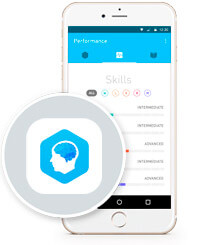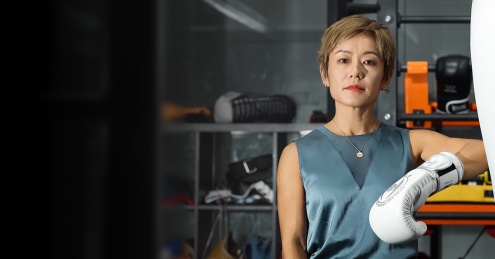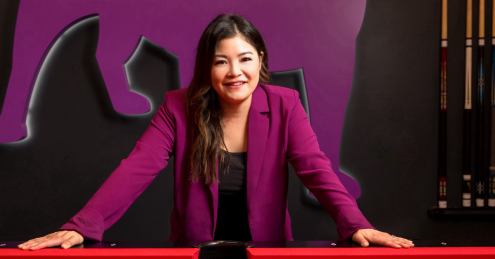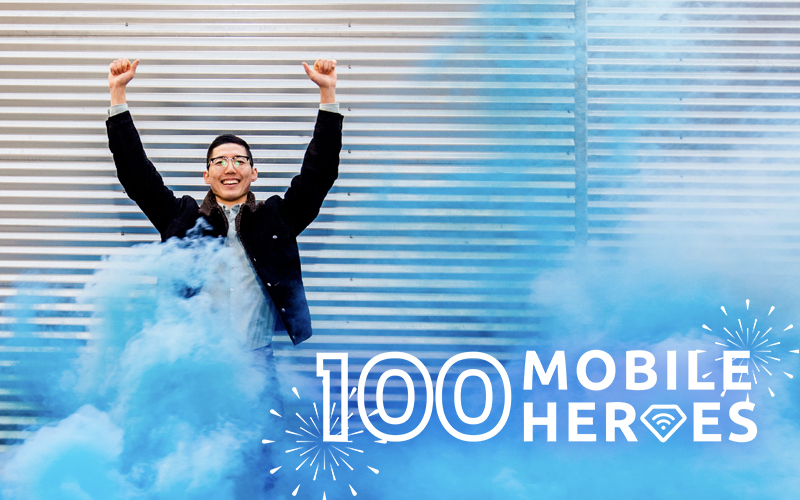Q&A with Oliver
This Q&A reflects Oliver's time as Senior Growth Manager at Elevate Labs. Currently, Oliver is Head of Growth at Channel AI.
Oliver Wang started his career in marketing at Quinstreet, a digital marketing agency. After learning the fundamentals of digital marketing, Oliver joined the UA team at Nexon where he had the good fortune of working on a slew of iconic franchise gaming titles and fulfilling his childhood dream of working on the Maplestory franchise, whose games he grew up with. Oliver was formerly Elevate Labs' first ever UA hire and is now Product Marketing Manager at Electronic Arts.
Read Oliver's latest article: "How I Survived (and Thrived) Running UA at a Mobile App Startup"
In your own words, could you tell us about the apps that you manage?
I manage Elevate, our flagship brain-training app, and Balance, our newly-released meditation app. Elevate is a brain-training tool with 35+ games that boost practical skills like math, reading, writing, and speaking. We serve millions of users around the world, from students trying to find an edge in the classroom, to working professionals looking to improve productivity, to retirees aiming to stay sharp. It’s also a recipient of Apple’s App of the Year award.
Balance helps users improve their sleep, stress, mood, and more. Using details about each user’s background, goals, and preferences, Balance assembles a custom meditation program using a library of thousands of audio files. The app demystifies meditation and makes it readily accessible for those with no experience and veteran meditators alike.
Both apps speak to Elevate Labs’ mission to improve people’s minds and add meaningful utility to people’s lives. I think that shows in the polished design and thoughtful UI of our apps, and I’m proud of what we’ve created so far.
How did you get started in mobile marketing?
I got my start in mobile marketing at Nexon, a video game publisher (shout out to Warren and crew!). I didn't specifically pursue mobile marketing, but rather just followed companies and products that I respected. It just so happened that a company whose games I grew up playing religiously was hiring for a UA role.
What do you like most about mobile marketing?
I appreciate how the ad creation ecosystem is constantly innovating. Facebook, for example—there's something satisfying about creating an ad on Ads Manager, sending a preview to the News Feed on my phone, then publishing it to the wild—all in a few clicks.
It's cool to see improvements like placement customization, dynamic CTAs, or dynamic ad copy, bring us closer to serving the right ad to the right person.
What does it take to succeed in mobile marketing?
A high EQ/emotional intelligence. So much of the role is relationship management across agencies, ad networks, and internal teams. Empathy goes a long way in facilitating productive conversations and understanding how users will receive your ads and experience your product.
What strategies work best to convert installs into engaged app users?
A heavily A/B tested onboarding flow, a well-oiled lifecycle marketing campaign, a compelling content calendar… the list goes on. It certainly helps to bring in qualified installs to begin with. For example, an incentivized install will undoubtedly behave differently than an organic install.
In the past year, what is one tip you can share that made the biggest performance difference for your UA strategy?
Simplifying campaign structure on Facebook has worked surprisingly well at times. For example, broadening audiences, slimming down the number of ads per ad set, or using auto placements can be highly effective. The urge to constantly optimize ad set levers and break out more granular campaigns is still strong, but I’m learning to trust the process.
How have you pivoted your app marketing strategy in response to the current climate as a result of the global pandemic?
During this period, I have oscillated between over-analyzing and not analyzing enough. With many external factors affecting advertising this year, it is tempting to assume correlations exist and to find data supporting that narrative.
To avoid such presumptions, I have pivoted to contextualizing current events in my data analyses. We take our due diligence further by looking into factors like creatives, audiences, and conversion rates, attempting to unpack the ever-nebulous “market forces.”
What advice can you offer marketers to successfully re-engage mobile app users?
I'm still figuring this out myself, especially in light of how iOS 14 could drastically change retargeting. I suggest asking good questions to your data team and retargeting vendors, and making sure you’re set up to measure incrementality.
What’s your top tip when it comes to mobile ad creative?
Add burn-in subtitles for your videos, where applicable. The performance difference was huge for us on Youtube/News Feed.
What is your go-to resource for keeping up with the mobile ad tech industry?
Twitter for hot takes and the latest platform fees drama, MobileDevMemo for interesting insights, and Linkedin newsfeed as a general resource.























